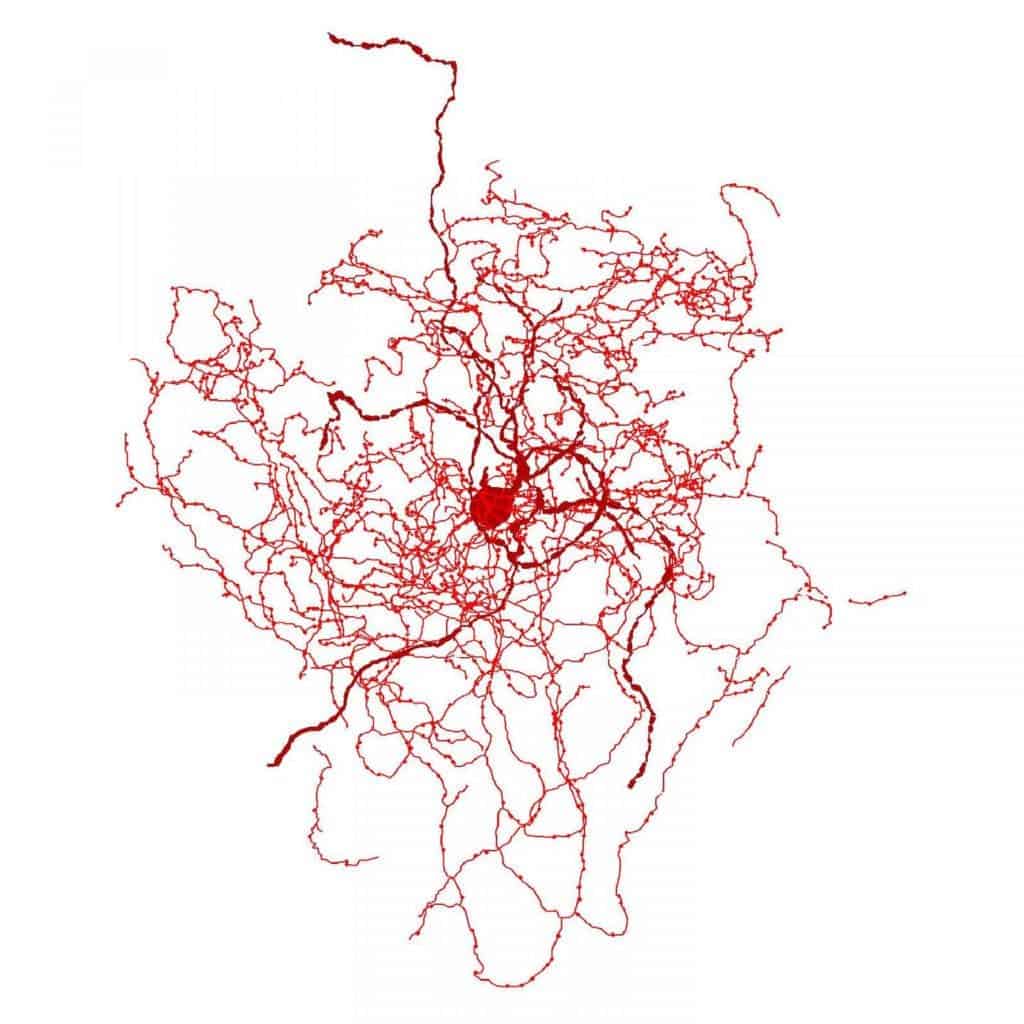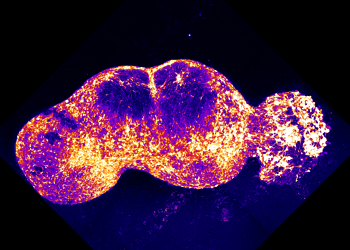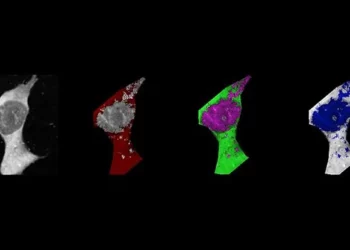
What makes humans so smart? No one’s really sure what makes our brains so special compared to those of other animals, but there are some hints that something special might occur at the cellular level. An intriguing new study supports this idea. In the paper, scientists describe the discovery of a new type of brain cell, one that doesn’t hasn’t been observed in animal models and could very well be unique to humans.
Remarkably, the new neuron was identified by two different research groups working independently from each other, using totally different techniques.
Gábor Tamás, a neuroscientist at the University of Szeged in Szeged, Hungary, along with colleagues conducted detailed examinations of the shape and electrical properties of cells collected from the neocortex.
The neocortex — the most complex part of the brain — is thought to be responsible for human consciousness and many other functions that we think of as unique to our species. It’s much larger, compared to our body size, than in other animals.
Meanwhile, in the United States, at the Allen Institute for Brain Science, researchers uncovered a suite of genes that encode brain cells but couldn’t be found in the genomes of any rodent.
While visiting the Allen Institute to present his latest research on specialized human brain cell types, Tamás was surprised to learn that his American colleagues had hit on the same cell using a very different technique.
“We realized that we were converging on the same cell type from absolutely different points of view,” Tamás said.
The two groups instantly decided to collaborate.
When looking under the microscope, Tamás and colleagues observed some odd-looking, bushy-shaped neurons. Because the dense bundle looked like a rose after it has shed its petals, the scientists named the cells “rosehip neurons”. They knew they had come across a new type of brain cell because the profile of the proteins coating the neuron’s membranes had never been seen in humans before.
These rosehip neurons are what scientists call inhibitory neurons, which interrupt the activity of other neurons in the brain. Much like traffic lights, this class of neurons stand at crossroads, exciting or blocking neural signals. Judging from their density, rosehip neurons make up roughly 10% to 15% of all inhibitory neurons in the outermost layer of the cortex.
Rosehip neurons form synapses with another type of neuron in a different part of the human cortex, known as pyramidal neurons, which they likely block when the opportunity is right.
Tamás says inhibitory neurons are like the brakes on a car and rosehip neurons, in particular, would be the breaks that only work in a particular stop on your drive.
“This particular cell type — or car type — can stop at places other cell types cannot stop,” Tamás said. “The car or cell types participating in the traffic of a rodent brain cannot stop in these places.”
At the Allen Institute, in collaboration with the J. Craig Venter Institute, researchers found that rosehip neurons activate a unique set of genes that haven’t been seen in any mouse brain cell types they’ve studied before.
“Alone, these techniques are all powerful, but they give you an incomplete picture of what the cell might be doing,” said Rebecca Hodge, Senior Scientist at the Allen Institute for Brain Science and an author on the study. “Together, they tell you complementary things about a cell that can potentially tell you how it functions in the brain.”
We don’t know yet for sure if the newly identified type of neurons is unique to humans but the fact that they don’t exist in rodents is yet another indication of why lab mice aren’t by far the perfect model of human disease.
“Our brains are not just enlarged mouse brains,” said Trygve Bakken, Senior Scientist at the Allen Institute for Brain Science and an author on the study. “People have commented on this for many years, but this study gets at the issue from several angles.”
“Many of our organs can be reasonably modeled in an animal model,” Tamás said. “But what sets us apart from the rest of the animal kingdom is the capacity and the output of our brain. That makes us human. So it turns out humanity is very difficult to model in an animal system.”
In the future, the researchers plan on looking for rosehip neurons in other parts of the brain. They would also like to explore their potential role in brain disorders.
The findings appeared in the journal Nature Neuroscience.






